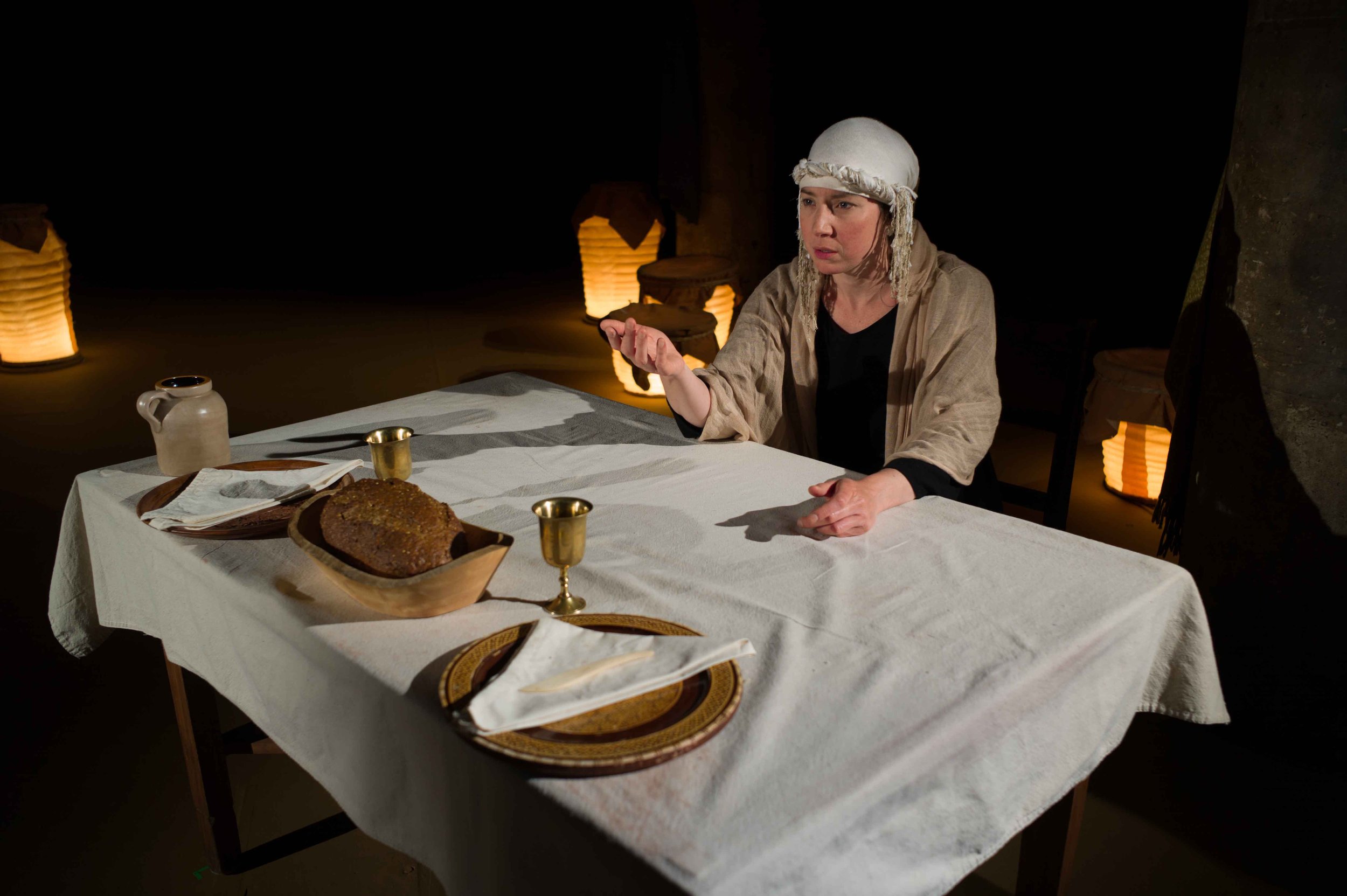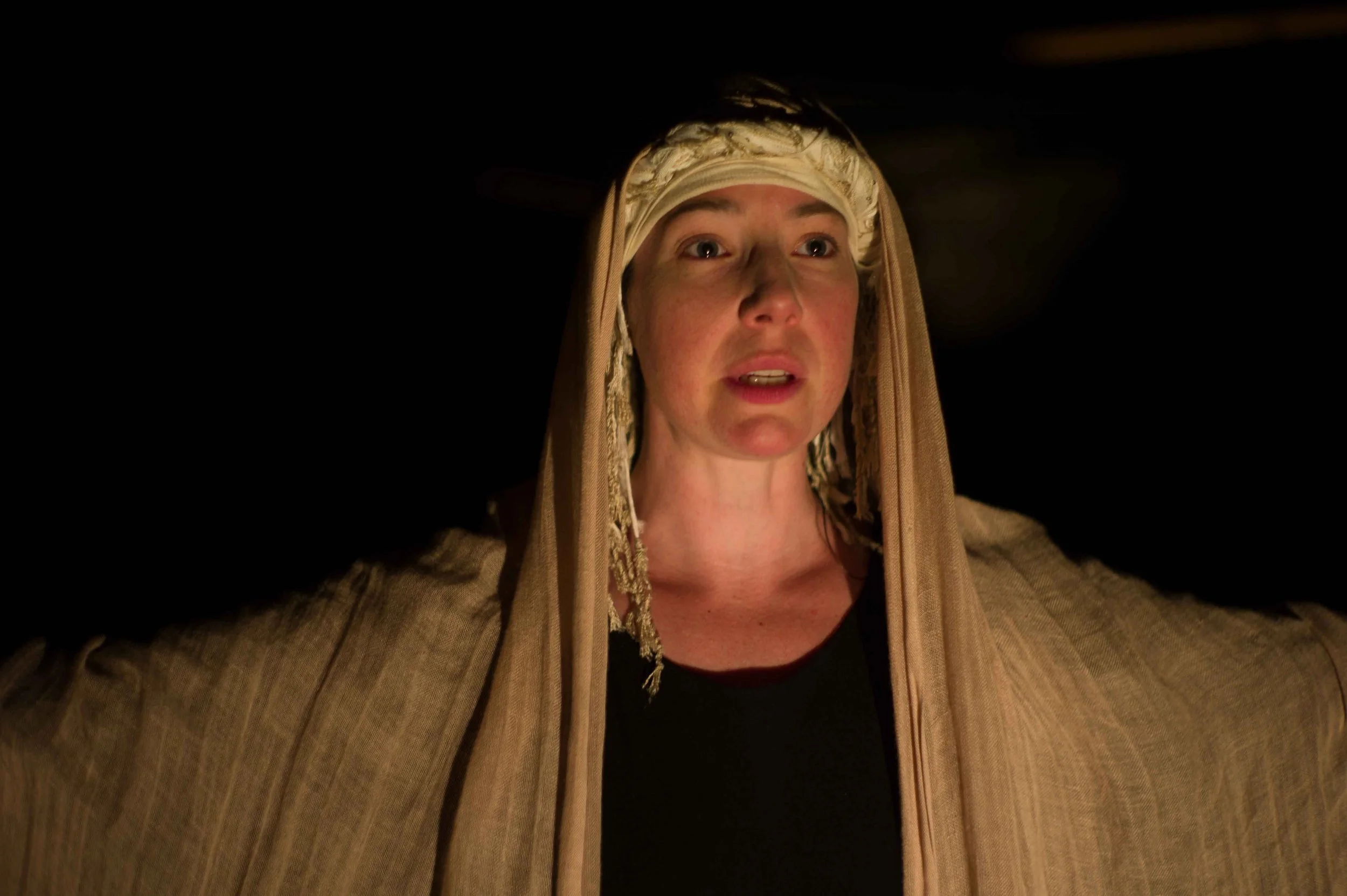The Testament of Mary by Colm Tóibìn
The regional premiere of The Testament of Mary ran at Undermain Theatre from March 17 – April 18, 2015 with previews March 17-20. Written by author, playwright and Columbia University professor, Colm Tóibín, The Testament of Mary is the portrait of a woman whose life has been torn apart by grief and whose world has been altered irrevocably in the aftermath of her loss. We meet Mary of Nazareth but not the one we learned about in Sunday School. Based on the 2012 novella by Colm Tóibín, The Testament of Mary delves into an alternative version of the story, giving Mary a chance to tell it herself, not as a saintly icon, but as a real flesh and blood woman who has felt the depth of human suffering in her bones.
When the play first premiered on Broadway, staring Fiona Shaw in 2013, it was nominated for 3 Tony Awards, including Best Play. It was also met with scathing reviews and outrage from some members of the Catholic community. When Undermain announced that the regional premiere of Tóbín’s Testament would close out our 31st season, it certainly stirred up some controversy. Long committed to producing experimental and challenging works, UMT was not to be deterred. In its early days, the work produced at Undermain would meet with occasional protests from some more conservative groups. Over the past three decades, however, Undermain has seen the city grow and embrace its thriving artistic community and its provoking and sometimes controversial work.
Despite a little heat from those who did not want to see the play produced, Testament enjoyed an incredible run at UMT that received many a standing ovation for an artfully crafted one-woman play and a deeply moving performance by company member, Shannon Kearns. The masterful poetry of this lyrical language delivered by Kearns in direct address held the audience riveted for an uninterrupted 85 minutes.
The words of Tóibín were underscored in this production by an original soundtrack designed by Executive Producer, Bruce DuBose. The haunting music composed by DuBose featured a collection of instruments from the Ancient Middle Eastern and Far Middle Eastern world. A recording of Kearns singing the eerily beautiful melody of the “Magnificat” by Angelo Bernardi (1675), set the tone as audience members arrived. Upon entering the theater, they were encouraged by house management to circle the stage, past the veiled figure of Mary and around the set to take their seats. Our Lady sat upstage with her back to the audience, wearing an iconic blue robe, trimmed in gold and rippling across the entirety of the set and stage like a river or the sea. Flanking her on either side were two attendants (Damek and Derek Salazar) robed in black. When all audience members had taken their seat, Mary stood and the veil fell to reveal an entirely different Mary. Somber and barefoot in a simple black dress, with a white wrap on her head. Her surroundings were starkly simple and pragmatic, consisting of a wooden table, a few chairs and earthen jugs resting on the ground near Undermain’s heavy concrete pillars (properties design by Linda Noland). Company member and Tony Award-winning designer, John Arnone was responsible not only for the set and costume design, but also for lighting. He designed the dynamic juxtapositions of light and shadow through which Mary traveled as she told her story. These moments were largely inspired by the work of master painter, Johannes Vermeer. The design also featured two intersecting lines of cylindrical florescent lights that formed a cross just above center stage, drawing emphasis to Mary, flickering on when Mary came out of a reverie and returned to the reality of her imprisonment.
One of the most stunning and memorable moments of this production occurred at the end of the play. Mary crossed silently downstage toward the audience as curtains far upstage slid open to reveal a large and impressive wooden cross, silhouetted against a wall of devotional candles housed in red glass. As the lights begin to dim, she looked to us long and hard, as if we might be able to tell her the purpose in all this. Finally, with a fierce strength in her soft and stoic voice she said, “…it was not worth it. It was not worth it.”
Colm Tóibín was able join us for the first preview, followed (of course) by hors d’vours and libations in the UMT lobby to celebrate the start of a wonderful run. Under the sure direction of the Katherine Owens, with the craft of Kearns and the tireless creative power of the UMT team, The Testament of Mary proved the perfect close to season 31.












































